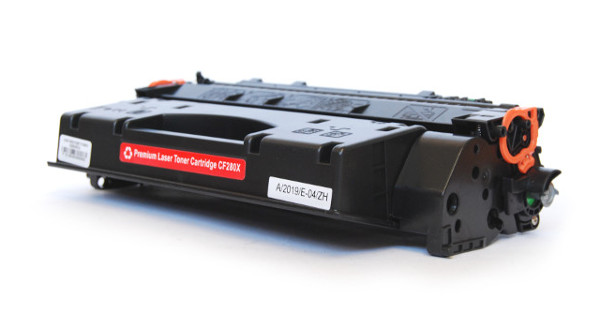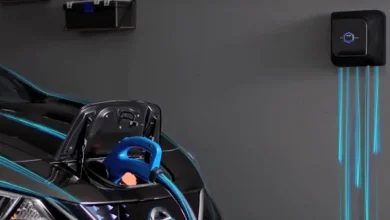What will be the future of printers?
What will be the future of printers?

Printers are an essential part of our lives. We use them to print out documents, photos, and other important information. Two of the most popular types of printers are laser and inkjet printers. Laser printers use a toner cartridge to print, while inkjet printers use ink cartridges. Both printers have their advantages and disadvantages, and both have been around for many years. However, with the advancement of technology, the question arises, what will be the future of laser printers and inkjet printers? In this article, we will explore the future of both laser printers and inkjet printers, their advantages, disadvantages, and the impact of technology on their future.
What will be the future of laser printers?
Laser printers have been around for several decades, and they continue to be a popular choice for businesses and individuals. However, with the rapid advancement of technology, the future of laser printers is expected to change significantly. In this article, we will discuss the trends that are likely to shape the future of laser printers.
Trends that Will Shape the Future of Laser Printers
Cost Reduction
One of the main factors that have limited the adoption of laser printers in homes and small businesses is their high cost. However, as technology continues to evolve, the cost of laser printers is expected to decrease significantly. This reduction in cost will be driven by several factors, including:
- Advancements in manufacturing processes, which will make it possible to produce printers at a lower cost.
- Increased competition among manufacturers, which will force companies to lower their prices to remain competitive.
- The adoption of new materials and components that are less expensive than traditional ones.
The reduction in cost is expected to make laser printers more accessible to consumers, which will, in turn, drive an increase in demand for these devices.
Improved Print Quality
The print quality of laser printers has improved significantly over the years, but there is still room for improvement. In the future, laser printers are expected to produce even sharper and more vivid images. This improvement in print quality will be driven by several factors, including:
- The development of new toners that produce more vibrant colors and sharper images.
- The use of advanced printing technologies that improve the resolution of printed images.
- The incorporation of artificial intelligence (AI) and machine learning (ML) algorithms that optimize the printing process to produce the best possible results.
Improved print quality will make laser printers more attractive to consumers who need to print high-quality documents and images.
Greater Connectivity
The future of laser printers is likely to be characterized by greater connectivity. In the past, laser printers were typically connected to a computer via a USB cable. However, as technology has evolved, it is now possible to connect printers to a network or the internet. This increased connectivity has several benefits, including:
- The ability to print from any device on the network, including smartphones, tablets, and laptops.
- The ability to access and print documents from cloud storage services, such as Google Drive and Dropbox.
- The ability to remotely manage and monitor the printer, including performing maintenance and updating firmware.
Greater connectivity will make laser printers more versatile and convenient, which will further drive their adoption.
More Eco-Friendly
Environmental concerns are becoming increasingly important to consumers, and the future of laser printers is likely to reflect this trend. Manufacturers are expected to develop more eco-friendly printers that minimize their impact on the environment. This may include:
- The use of recycled materials in the manufacture of printers and toner cartridges.
- The development of energy-efficient printers that consume less power.
- The implementation of recycling programs that allow consumers to return used toner cartridges for recycling.
More eco-friendly printers will be attractive to consumers who want to reduce their environmental footprint and support sustainable products.
Integration with Smart Home Technology
The integration of laser printers with smart home technology is another trend that is likely to shape the future of these devices. As smart home technology continues to evolve, it is becoming possible to control and manage devices from a central hub or using voice commands. This integration has several benefits, including:
- The ability to print documents and images using voice commands, making the process faster and more convenient.
- The ability to check the status of the printer remotely, including ink levels and error messages.
- The ability to receive alerts and notifications on a smartphone or other device when the printer needs attention.
Integration with smart home technology will make laser printers even more convenient and easy to use.
What will be the future of inkjet printers?
Inkjet printers have been a popular choice for both home and office use for many years. They offer high-quality printing at an affordable price point, making them a versatile option for consumers. However, as technology continues to evolve, the future of inkjet printers is likely to change significantly. In this article, we will explore the trends that are likely to shape the future of inkjet printers.
Trends that Will Shape the Future of Inkjet Printers
Improved Print Quality
One of the main advantages of inkjet printers is their ability to produce high-quality prints with vibrant colors and sharp images. However, there is still room for improvement in print quality, and this is expected to be a major trend in the future of inkjet printers. Several factors are likely to drive this improvement, including:
- The development of new ink formulations that produce more vivid colors and sharper images.
- The use of advanced printhead technology, such as Micro-Electro-Mechanical Systems (MEMS), which allows for higher resolution and more precise control over ink droplets.
- The incorporation of Artificial Intelligence (AI) and machine learning algorithms that optimize the printing process to produce the best possible results.
Improved print quality will make inkjet printers even more attractive to consumers who require high-quality prints, such as photographers and graphic designers.
Increased Speed
Another trend in the future of inkjet printers is the increase in printing speed. While inkjet printers are known for their high-quality output, they can be slow compared to other types of printers. However, as technology continues to evolve, inkjet printers are expected to become faster. Several factors are likely to drive this increase in speed, including:
- The development of faster printhead technology, which can deliver more ink droplets per second.
- The use of more powerful processors and memory, which can process data more quickly and efficiently.
- The incorporation of hardware and software optimizations that speed up the printing process.
Increased printing speed will make inkjet printers more efficient and productive, which will be attractive to consumers who need to print large volumes of documents quickly.
Greater Connectivity
Like laser printers, inkjet printers are also likely to become more connected in the future. This increased connectivity will allow for greater versatility and convenience when using these devices. Some of the ways that inkjet printers are likely to become more connected in the future include:
- Integration with cloud storage services, such as Google Drive and Dropbox, which will allow users to print documents from anywhere with an internet connection.
- Compatibility with mobile devices, such as smartphones and tablets, which will allow for easy printing of documents and images from these devices.
- Integration with smart home technology, which will allow users to control and monitor their printers using voice commands or a mobile app.
Greater connectivity will make inkjet printers more versatile and convenient, which will be attractive to consumers who want to print from a variety of devices and locations.
Increased Eco-Friendliness
Environmental concerns are becoming increasingly important to consumers, and inkjet printer manufacturers are likely to respond by making their devices more eco-friendly. Some of the ways that inkjet printers are likely to become more eco-friendly in the future include:
- The use of more sustainable materials in printer construction, such as biodegradable plastics and recycled components.
- The development of more energy-efficient printers that consume less power and reduce carbon emissions.
- The implementation of recycling programs that allow consumers to return used ink cartridges for recycling.
Increased eco-friendliness will make inkjet printers more attractive to consumers who want to reduce their environmental footprint and support sustainable products.



